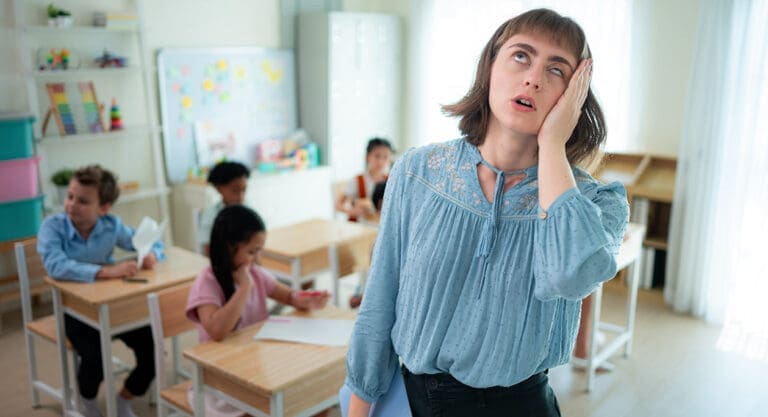We want our students to behave acceptably and appropriately in our class and school. We also want them to learn and internalize the value and worth of behaving in a manner that is respectful and appropriate to the circumstances in which they find themselves. Obviously, this is mostly a teaching-and-learning process rather than a shaming-and-punishing practice.
Nevertheless, we can find ourselves in situations with students where they are ignoring our direction or failing to engage in acceptable behavior. These are times to ask ourselves how we might teach, nurture, and reinforce the behavior we seek. There may even be occasions when we enlist the student in discussing and deciding the best course of action to take.
Many good options exist from which we can choose when we need to modify a student’s behavior. However, there are some actions that, while they may have been viewed as acceptable by or even popular with some, carry significant risks to our relationships and can have lasting negative consequences for students who experience them. Here are five consequences for misbehavior that carry significant risk and deserve to be reconsidered.
Consequence #1: Ostracizing.
Choosing to “freeze out” a student or have the rest of the class ignore and not respond to a student is a high-risk action. We can permanently damage our and the class’s relationship with the student. Being noticed, belonging, and feeling included are powerful forces. When we deny our attention and reject our connection with students, the impact can be deep and lasting. Similarly, if we direct the rest of the class to ignore and refuse to engage a student, we place their sense of belonging in the class and with friends at risk. This consequence, if enacted in the context of a student who already may be struggling with identity, suffering from trauma, or dealing with other life issues, can have devastating consequences. For students who already struggle to form and maintain relationships, we may drive the student away rather than achieve the behavior change we seek.
Consequence #2: Threatening summer school.
We may say to students that if they fail to focus and do as they are told now, they will end up having to spend their summer vacation in summer school. However, positioning summer school as a negative consequence can make it a dreaded experience rather than an opportunity to strengthen learning skills and catch up on content. Further, depending on the time of the year and the age and maturity of the student, summer may seem like a long time into the future and have little immediate impact on their thinking and behavior.
Consequence #3: Assigning collective consequences.
We might think that by assigning consequences to the entire class, such as holding them after the bell or making them wait and be late to go to lunch, would be an effective way to bring peer pressure and change the actions of students exhibiting unacceptable behavior. However, the impact is likely to be the opposite. Students who do not have strong relationships with classmates, or who seek attention regardless of its form, may find the experience empowering. It is true that marshalling the entire class in pursuit of a shared, positive goal can build connectedness and increase shared commitment, but the opposite is not necessarily true. Consequences shared by students whose behavior does not deserve it can lead to conflict and resentment rather than camaraderie.
Consequence #4: Predicting future failure.
What we say, including our predictions, can have a profound and lasting impact on how our students see themselves and their future. Out of frustration, we might make a negative prediction about the future of a student; even if the goal is to convince the student to work harder now and avoid the future we predict, we risk the student accepting our words at face value. The student may already believe that they are not capable of learning success, and our words represent further proof.
Consequence #5: Denying recess.
This one is more so for our primary counterparts, as secondary schools typically do not schedule time for recess. Recess and other breaks from active learning can play a variety of roles for students. It may be a time to take the edge off pent-up energy and release accumulated stress from sitting quietly. It can be a time for connecting with friends and learning how to manage and resolve conflicts. It can also serve as a brain break, a time for reflection and making sense of what was just learned. While the consequence may make our point, it can lead to even less focus, more fidgeting, and additional acting out.
Without question, there are times when students frustrate us. We can feel as though we are out of options for modifying their behavior. These are times to step back, reflect, consult a colleague, or engage another school resource to help us identify promising options and alternatives. We need to avoid having today’s frustration become tomorrow’s relationship barrier.



